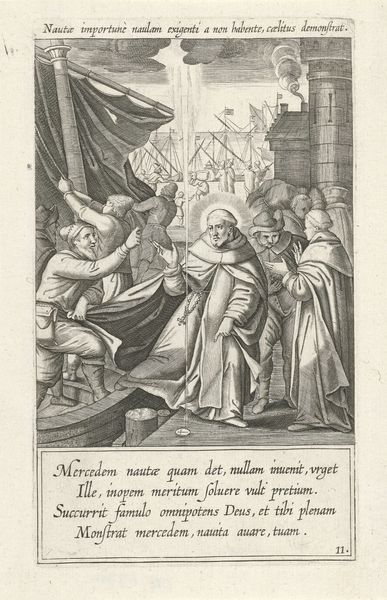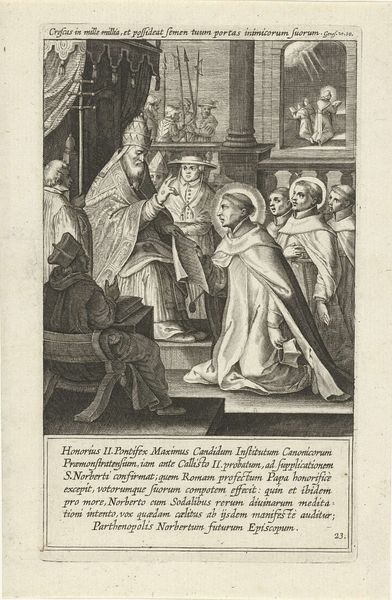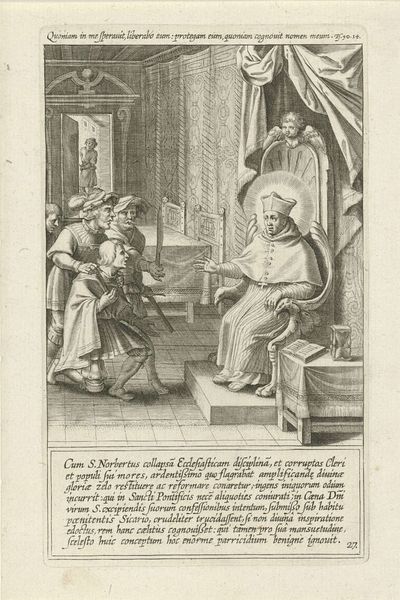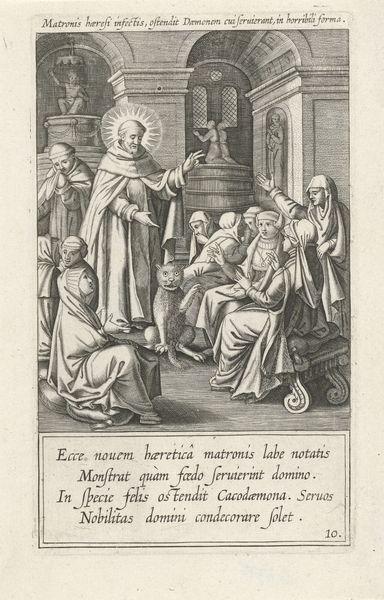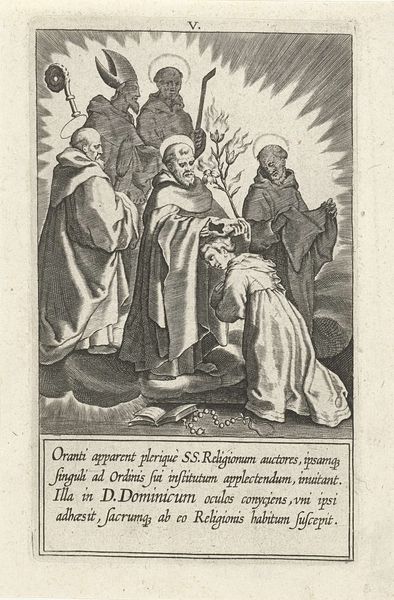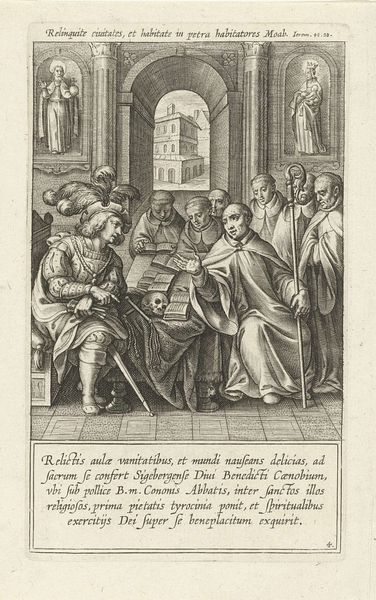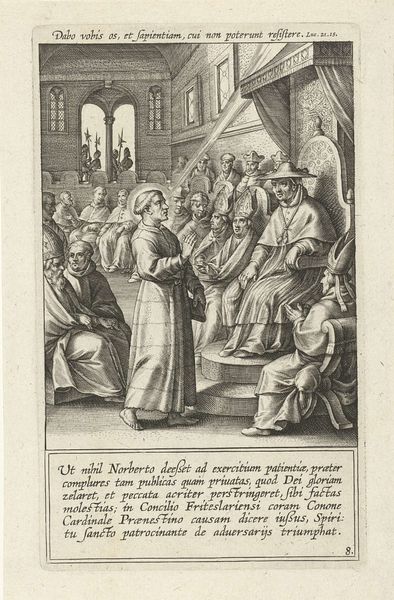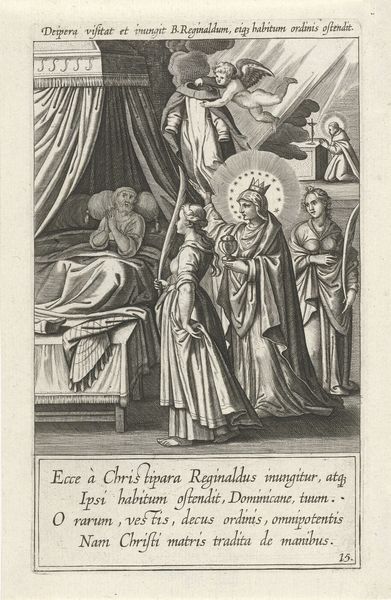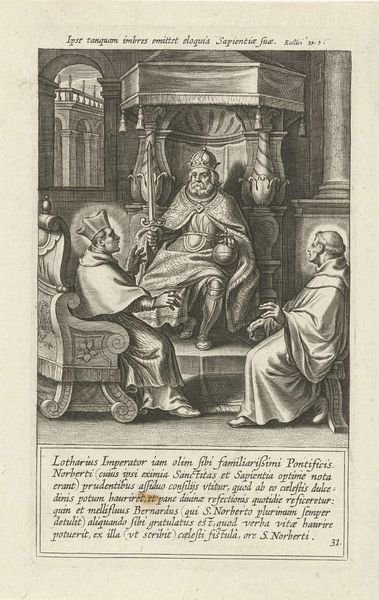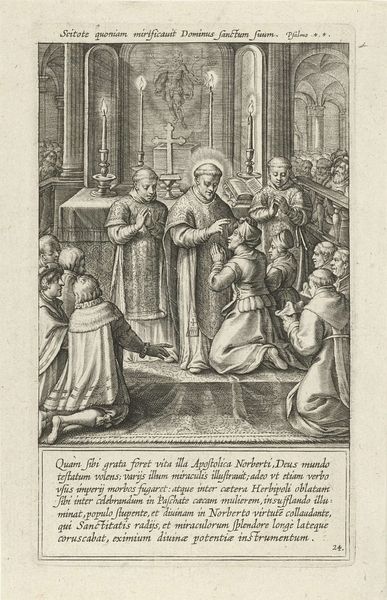
print, engraving
#
narrative-art
#
baroque
# print
#
old engraving style
#
figuration
#
line
#
history-painting
#
academic-art
#
engraving
Dimensions: width 90 mm, height 150 mm
Copyright: Rijks Museum: Open Domain
This print, "Vision of Innocent III," was created by Theodoor Galle around the turn of the 17th century. It's made with the intaglio process of engraving, meaning the artist would have used a tool called a burin to carve lines directly into a copper plate. Think about the level of skill required to create this image in reverse! Every tiny line contributes to the overall effect, from the textures of the robes to the expressions on the figures' faces. This laborious process, demanding time and expertise, underscores the value placed on meticulous craftsmanship at the time. Prints like this were not just art objects; they were a form of visual communication, spreading ideas and stories to a wider audience. The detailed imagery, combined with the printed text, speaks to the intertwined histories of art, craft, and the burgeoning print industry. It challenges us to consider the labour, skill, and social context embedded in this small but powerful work.
Comments
No comments
Be the first to comment and join the conversation on the ultimate creative platform.
